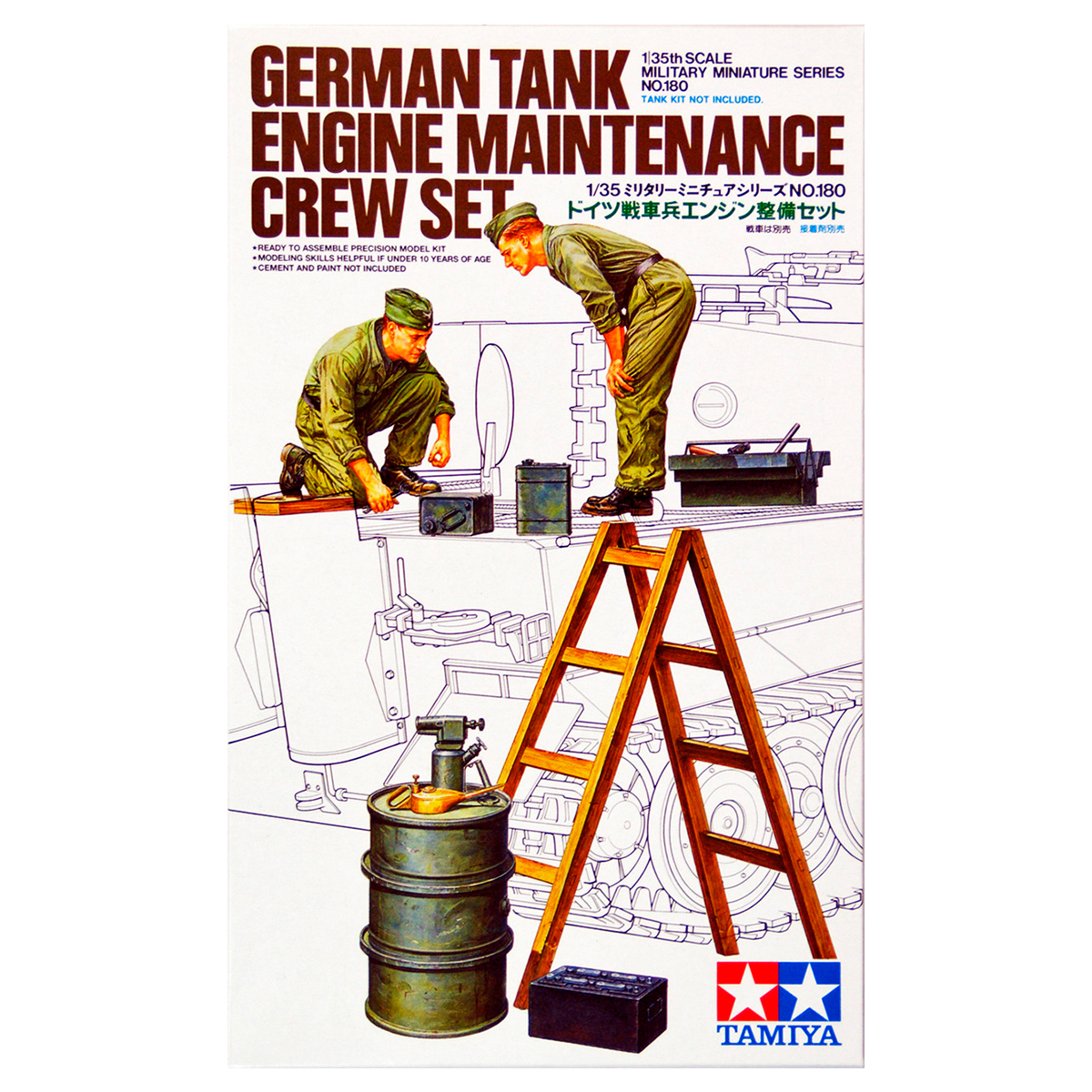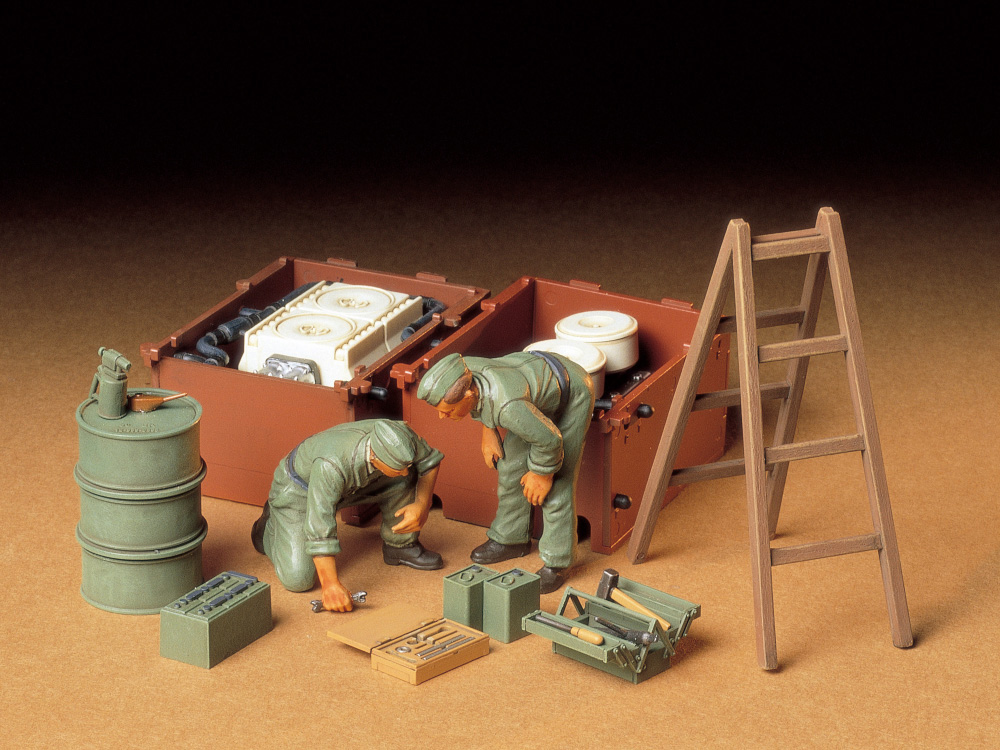1/35 German Engine Maintenance Crew
10,50€
In stock

*Please check our Privacy Policies to see how to we use your personal data.
*Por favor revisa nuestra Política de Privacidad para ver como tratamos tus datos personales
This set will easily allow you to depict a scene of WWII German tank engineers preparing to work on an engine.
★In addition to two engineer figures in overalls, engine parts for a Maybach HL230 engine which powered Tiger I, Panther, and King Tiger tanks are included.
★It also includes accessory parts to depict tools, toolboxes, an oiler, a burner, a drum can etc. to provide your diorama with a greater realistic presence.
Este set le permitirá representar fácilmente una escena de ingenieros de tanques alemanes de la Segunda Guerra Mundial preparándose para trabajar en un motor.
★Además de dos figuras de ingenieros con mono, se incluyen piezas de motor para un motor Maybach HL230 que impulsó los tanques Tiger I, Panther y King Tiger.
★También incluye piezas accesorias para representar herramientas, cajas de herramientas, un engrasador, un quemador, un bidón, etc. para dotar a su diorama de una mayor presencia realista.






 Request of SDS product data file / Product security
Request of SDS product data file / Product security